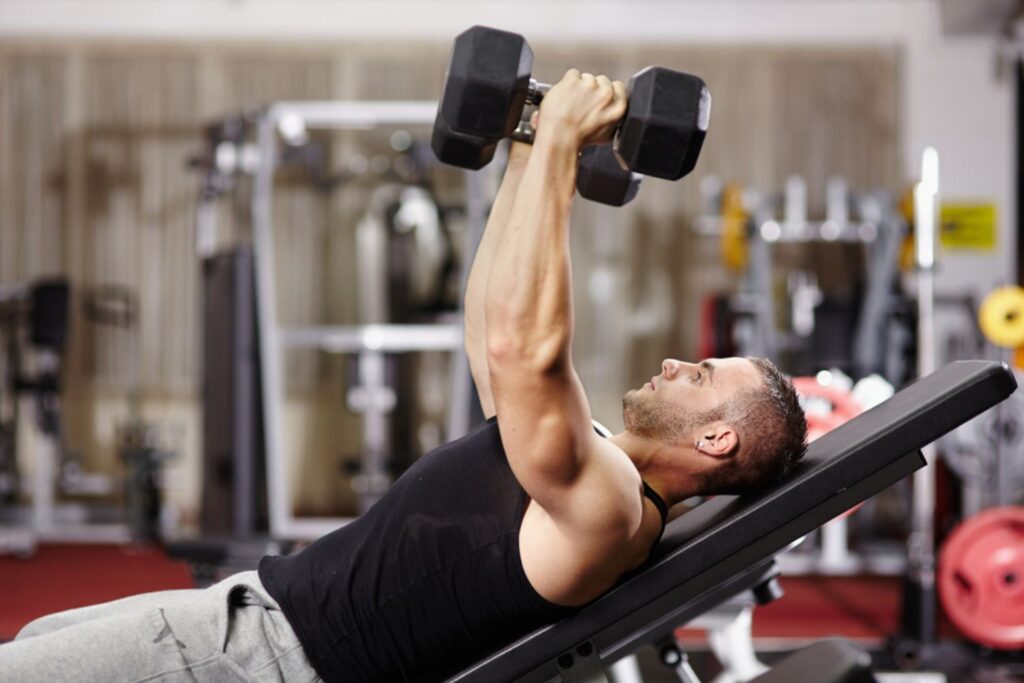THE DEADLIFT, AKA the king of all compound lifts, has long been revered as one of the ultimate tests of strength and power in weightlifting. Few exercises make for a more impressive Instagram post than a deadlift. Mostly because even beginners are able to lift close to their bodyweight in iron and can put up better numbers than in any other exercise. Deadlifts are a test of full body strength, as they activate muscles from glutes to delts. As such, deadlifts are frequently used as a measure of complete strength, but there are intricacies to what you should be aiming for.
While it’s only natural to compare your lifts to the guy next to you at the gym, you really shouldn’t get too hung up about it. There’s no definitive answer to how much weight you should be able to deadlift, as factors like weight, age, experience and body composition will all influence your capabilities. That being said, there are a few standards you should be aiming for, and understanding general benchmarks can help give you a goal to strive for and allow for the implementation of effective training strategies to help you make consistent progress.
Whether you’re a veteran or a novice, in this comprehensive guide we’ll tell you how much you should be able to deadlift. We’ll also be providing some tips on how you can improve your PBs and how to optimise your training.
How much should you be able to deadlift?
The ideal deadlift weight varies significantly from person to person. It’s unreasonable to expect someone who is 60kg to deadlift the same weight as someone who is 100kg. So ignore the guy next to you. Instead, the standards we set are going to be relative to bodyweight and experience level.
Most people won’t be able to deadlift twice their bodyweight on the first attempt, but deadlifting close to your weight, even if you’re a beginner, is a reasonable goal. To be considered strong, we’d set the bar at around 1.5 times your bodyweight for a single rep.
Here, we’ve broken down reasonable deadlift benchmarks to aim for, for every experience level.
Beginner Level: If you’re new to strength training and want to give deadlifts a try, a one rep max equal to your bodyweight is a reasonable starting point. A 0.75 times-your-bodyweight lift with a higher rep range of 5-10 reps should also be achievable. This is a solid foundation for building strength and mastering proper deadlift form without risking injury.
Intermediate Level: As you progress as a deadlifter, a new target of 1.5 times your bodyweight for a one-rep max should be the goal. For a higher rep range, aim for 1 to 1.25 times your bodyweight. Achieving this milestone will require consistent training and adherence to the proper technique; you don’t want to risk hurting yourself.
Advanced Level: Seasoned lifters and competitive athletes typically strive for deadlift weights exceeding 2 times their body weight. If you can lift double your weight, you’ve more than earned the right to call yourself strong without any hesitation, because it will have likely taken years of dedicated training to get to that point.
It’s worth noting here that a one-rep max is not the best way to measure your proficiency with deadlifts. The more you push to your limit, the more your form will suffer. So while you may be able to lift a relatively high amount for a standalone rep, consider whether you’ve maintained proper form while doing so. If you haven’t, lowering the weight and going for more reps with good form is far more beneficial.
How can you improve your deadlift PB?
Achieving and surpassing your deadlift goals requires a combination of effective training strategies, mastery of form, and a focus on recovery. Here are some key tactics to enhance your deadlift performance.
Focus on form: Mastering proper deadlift technique is crucial for both safety and performance. You’re dealing with a lot of weight with deadlifts, so the risk of injury is higher than in other exercises. To mitigate this risk and ensure you’re lifting at your full potential, make sure your setup includes a neutral spine, shoulders pulled back, hips hinged, and a firm grip on the barbell. Engage your core and drive through your heels as you lift the weight, maintaining a smooth and controlled motion throughout the lift.
Progressive overload: Gradually increasing the weight you lift over time is essential for stimulating muscle growth and lasting gains. Incorporate progressive overload into your training regimen by consistently adding weight to the bar or increasing the intensity of your deadlift variations.
Accessory exercises: Targeting weak points and reinforcing muscle imbalances through accessory exercises can complement your deadlift training. Exercises such as Romanian deadlifts, deficit deadlifts, and hip thrusts can strengthen key muscle groups involved in the deadlift, such as the hamstrings, glutes, and lower back.
Don’t disregard recovery: Adequate rest and recovery are important if you want to prevent overtraining. Prioritise quality sleep, proper nutrition, and active recovery techniques such as foam rolling and mobility work to support your deadlift training.
How often should you do deadlifts?
The frequency of deadlifting in your training program will depend on your goals. If you’re aiming to deadlift as much as possible, performing the exercise 2-3 times per week is a good standard. If you simply want to harness the all-encompassing muscle-growing benefits of deadlifts, doing them once per week should suffice.
Deadlifts are an extremely strenuous compound exercise, so if you start to notice signs of fatigue and soreness, consider taking a break. It would also be wise to plan de-load weeks, which will help you maintain muscle mass while lowering the risk of injury associated with overuse and burnout. Deadlift variations can also help you break through plateaued periods of growth and will at least shake up your routine.

Getty Images
Related:
















